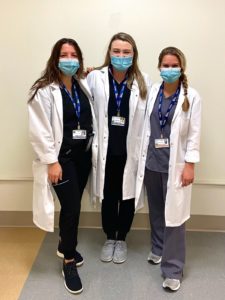UPDATE July 2022: With Medicare reimbursement cuts expected in FY 2023, looking at each component of PDPM to ensure optimal reimbursement is wise. The SLP Component contains the highest degree of variability from top to bottom and therefore the most opportunity. Since PDPM began, SNFs with a high degree of expertise in speech-language pathology are capturing $10-$12 more per day in PDPM reimbursement compared to their peers.
Speech-language pathologists in the medical setting have played a critical role during the Covid-19 pandemic by, among other things, ensuring medically fragile patients are on the safest yet least restrictive diet in order to prevent aspiration.
Because of the timing of this pandemic, skilled nursing facilities have had little time to look at the impact of PDPM on their speech therapy department and measure their results.
Has PDPM Impacted Your Speech Therapy Department? Let’s have a look at the most important operational aspects of PDPM in the speech therapy department:
1. Importance of the SLP Component Assessment – Perhaps the most significant operational change has been for speech therapy to see each new admission in time to perform the PDPM SLP Assessment in time for the 5-day MDS. When performed correctly, it is more than just “a screen.” According to Michael Webb, CCC-SLP, “Not assessing a new resident’s diet and appropriately changing consistencies at the right time leads to increased risk of aspiration and choking while denying the facility revenue that is appropriate. Well-trained nursing home speech therapists have the unique skills necessary to accurately assess the patient’s condition and capture speech-related comorbidities.” Capturing speech-related comorbidities not only captures valuable dollars in the SLP component but medical conditions are also identified in a timely manner in order for the interdisciplinary team to address.
2. Part B /Cognition /Dysphagia Treatment – A great speech therapist should shine while treating the long-term care population. Screening long-term care patients for impaired cognition and dysphagia is considered best practice and must be performed continuously. By treating those in need from the Part B population, it will produce revenue for the SNF and make a positive impact on CMI for those in case-mix states.
3. Caseload – What is the makeup of the speech caseload? Is there a mix of long-term and short-term patients on caseload? Is there a mix of patients on speech programs for dysphagia, cognition, and speech-language deficits? How productive are the SLPs? Does your building have the right amount of hours dedicated to speech therapy? Too many and the department is counterproductive. Too few, and you could be costing yourself valuable revenue. If you are having questions, it could mean that you don’t have the right amount of resources dedicated to speech therapy. Perhaps, too little, or perhaps too much?
High-performing speech therapy departments are scalable and productive based on incremental changes in the caseload. If you have any questions or could use a helping hand, contact Language Fundamentals. We would be glad to be a resource to your skilled nursing facility.
About the Author: Matt McGarvey is VP of Business Development for Language Fundamentals. Matt holds a BS in Marketing from Le Moyne College and an MBA in Health Systems Administration from Union Graduate College.



